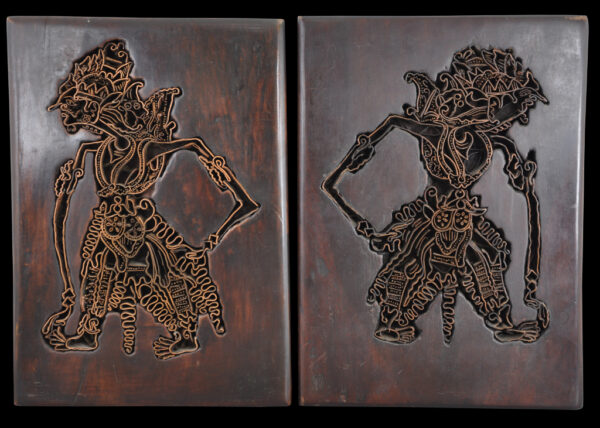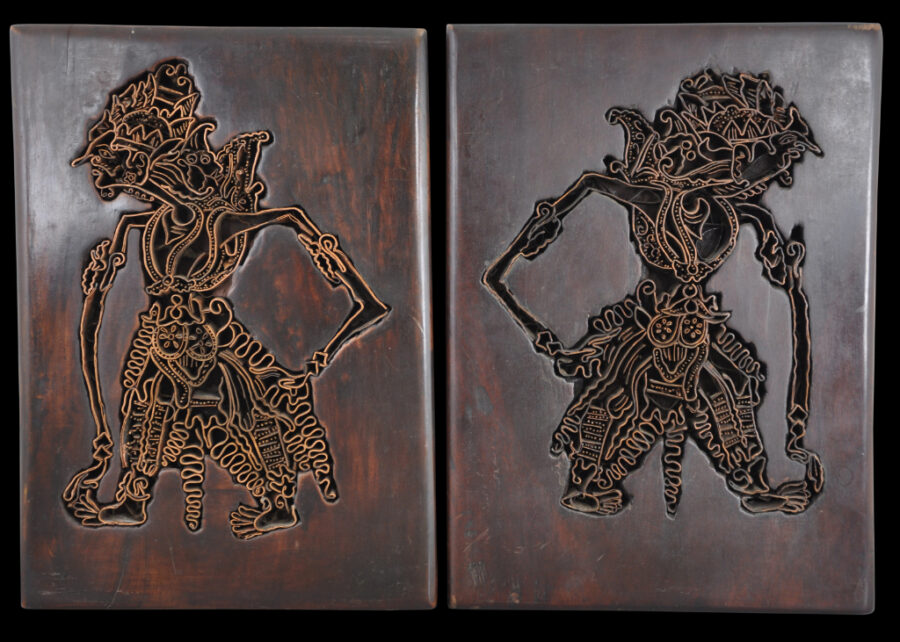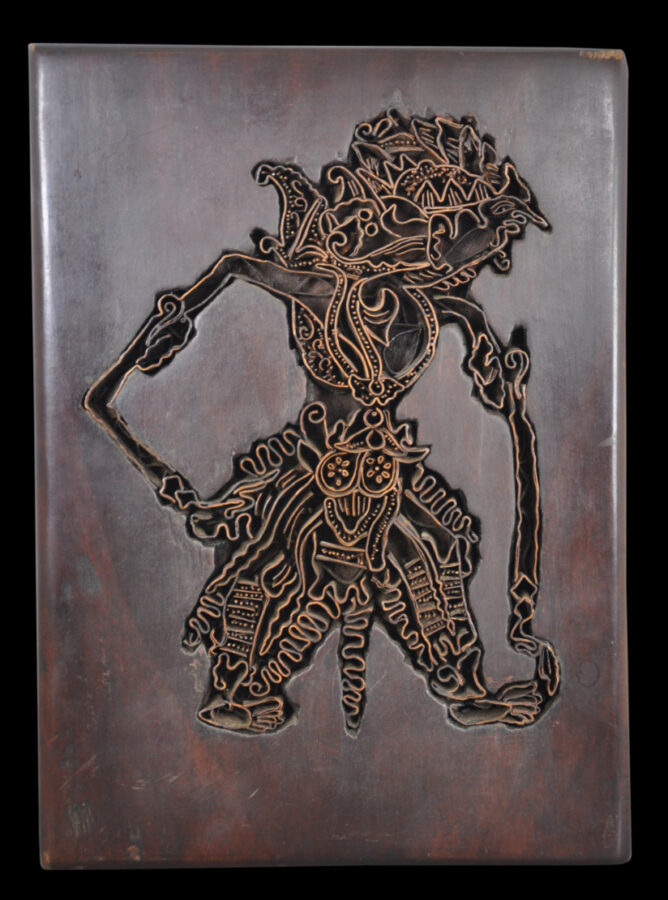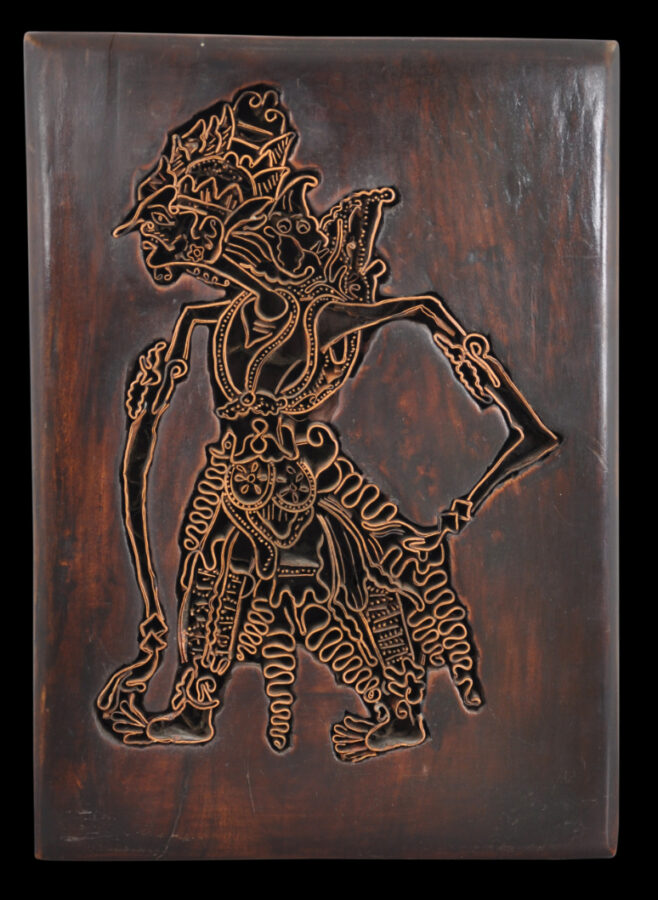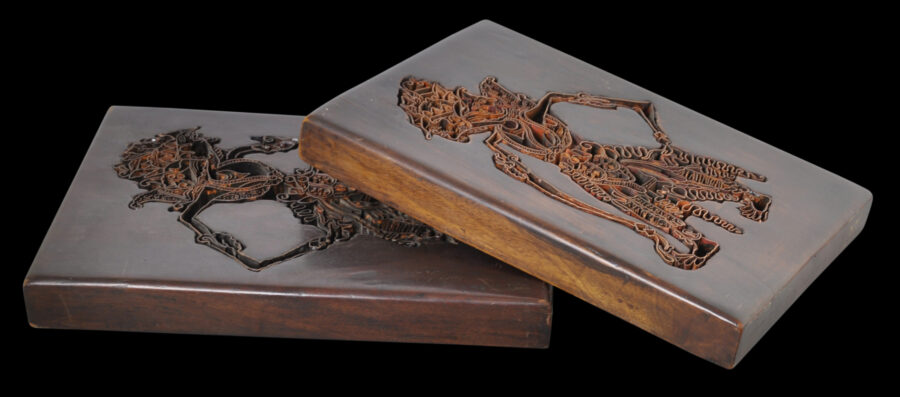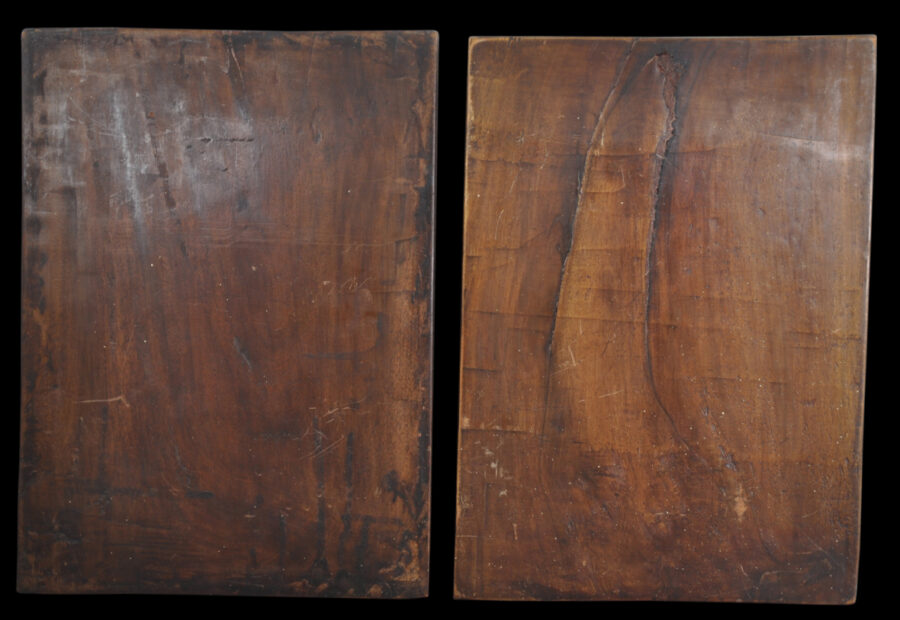Batik stamps in the form of wayang (shadow puppet) figures are unusual. This pair, in polished teak wooden mounts that probably date to the Dutch colonial period, are splendid examples.
Traditionally, designs on batik cloth (cloth that is decorated with a wax -resist technique) were hand-drawn but by the 19th century, stamps or cap were developed. These were made of copper strips soldered together into the desired design. Cap usually have floral motifs.
Batik cloth decorated with wayang figures usually was worn by older persons, because the wayang figures themselves were associated with wisdom and experience. Such cloth was also felt to have healing properties.
The figures represented are difficult to identify conclusively but probably are either Gatotkaca, a popular hero and son of Bima; or possibly Batara Bayu, the god of the wind; or maybe the court minister Sengkuni.
The two encased stamps are in fine condition and are particularly decorative. The wood in which they are encased has a lovely patina.
References
Angst, W., Wayang Indonesia: The Fantastic World of Indonesian Puppet Theatre, Verlag Stadler, 2007.
Fleischmann-Heck, I. et al, Batik: 75 Selected Masterpieces, The Rudolf G. Smend Collection, Galerie Smend, 2006.
Kerlogue, F., Batik: Design, Style & History, Thames & Hudson, 2004.
Khan Majlis, B. et al, Batik from the Courts of Java and Sumatra: Rudolf G. Smend Collection, Periplus, 2004.


